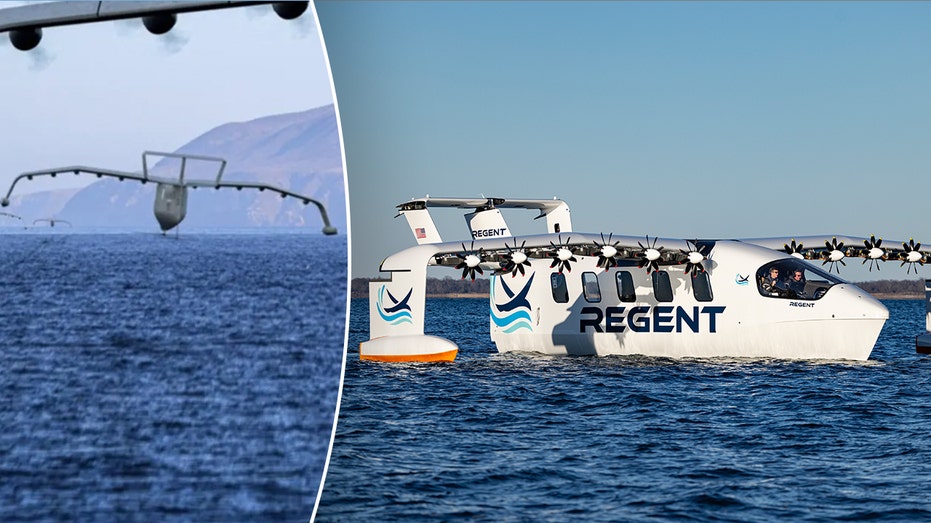- by foxnews
- 07 Apr 2025
Marine Corps bets on electric seagliders 'invisible' to enemy radar for medevac missions at sea
Regent scored another $10 million contract with the Marine Corps Warfighting Lab for its all-electric seaglider plane on Wednesday as U.S. defense policy shifts focus to oceanic theaters.

The Marine Corps Warfighting Lab extended its collaboration with Regent with an estimated $10 million contract on Wednesday, following the successful completion of a $4.75 million contract.
This new phase of testing will focus on examining its seaglider's capabilities on medical evacuation missions.
For CEO Billy Thalheimer, a new era of global conflict centered on the Indo-Pacific represents a "reversion to World War II-style tactics," and the needs of the Pentagon will be once again focused on maritime operations instead of desert warfare like the war on terror in the Middle East.
"We want something affordable and mass-produced. We do not have enough boats, the nation is working on our shipbuilding capabilities, we want something easy to operate and easy to crew, because it currently takes two years to train a pilot," he said.
The seaglider travels up to 180 miles at up to 180mph speed. It can take off and land on water, "eliminating the need for vulnerable runway infrastructure," according to the company.
The aircraft is all-electric, which Thalheimer says makes it easier to refuel anywhere there is electricity, rather than having to transport in gas.
"You think about a gallon of fuel today, you know, $6. If we're buying it in the U.S., which can go to 100 to $150 when it's delivered to those, disparate island chains," he said.
Regent's Viceroy, which holds 12 passengers with a 65-foot wingspan, completed a successful sea test on Rhode Island's Narragansett Bay earlier this month.
Regent's "float, foil, fly" motto describes the flight path of the seaglider: First, it floats on the ocean's surface, then as it picks up speed it "foils," meaning it gliders over the water's surface with wing-like structures known as hydrofoils, which then retract as it lifts into the air.
The vehicle leverages "ground effect," avoiding the turbulence of the sky by hovering just around 30 feet in the air.
The glider's earth-hugging flight path is also designed to avoid enemy radar.
"There's this great opportunity to fly below radar, but really above sonar in this hard-to-see space."
One key mission Regent hopes to fulfill is medical evacuations, given the quick turn-around its seagliders can have from floating on the sea near a port to flying.
Regent has submitted its design basis agreement (DBA) to the Coast Guard for its Viceroy seaglider to the Coast Guard and expects approval this year.
The company has garnered over $90 million in investment from investors including 8090 Industries, Founders Fund, Japan Airlines and Lockheed Martin.
- by foxnews
- descember 09, 2016
Ancient Ten Commandments fragment of 2,000-year-old manuscript to go on display at Reagan Library
The "Dead Sea Scrolls" exhibit, announced at the Ronald Reagan Presidential Library and Museum, features ancient Jewish manuscripts, plus the rarely seen Ten Commandments Scroll.
read more





